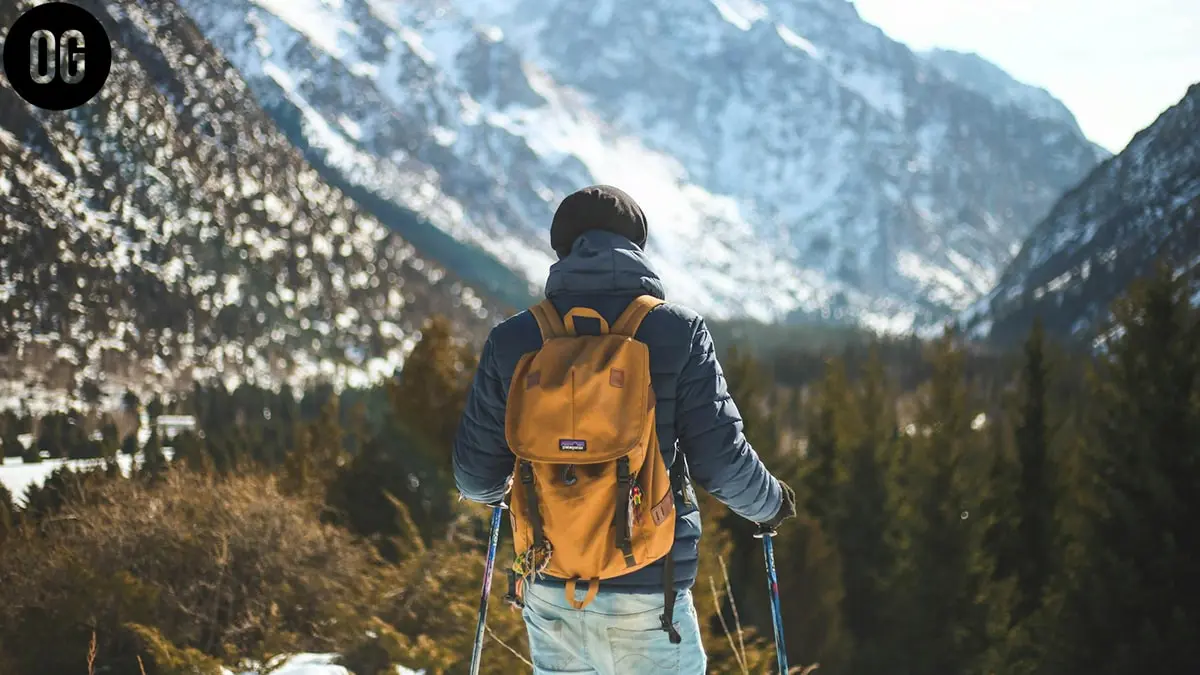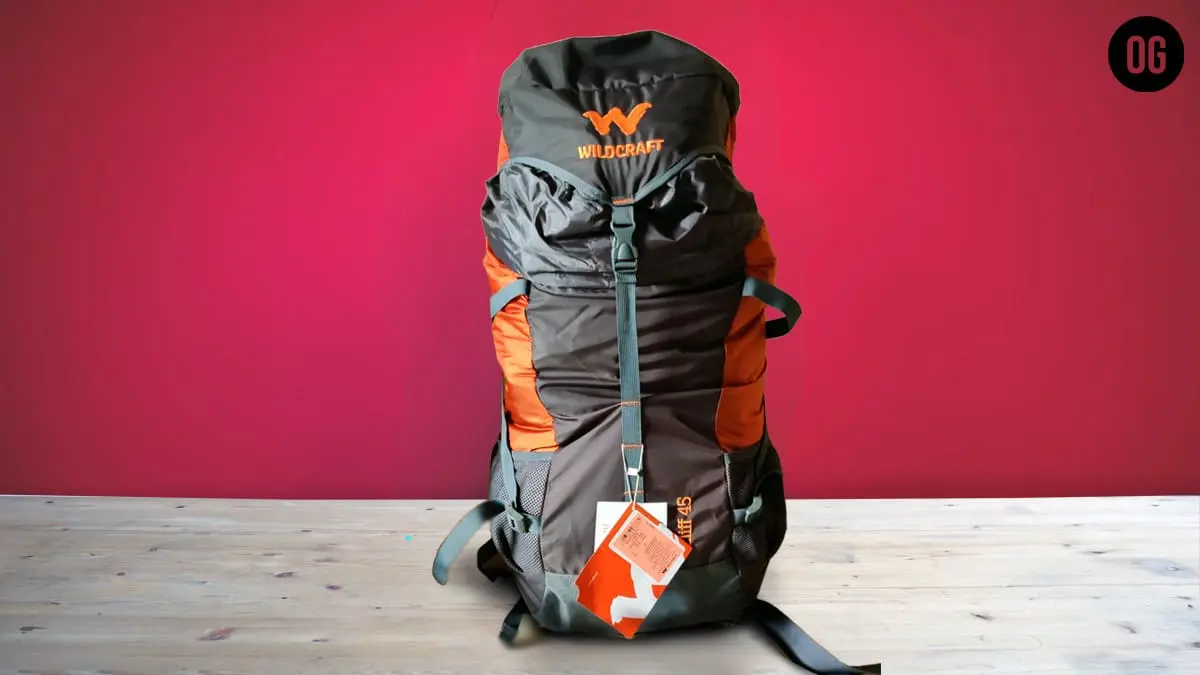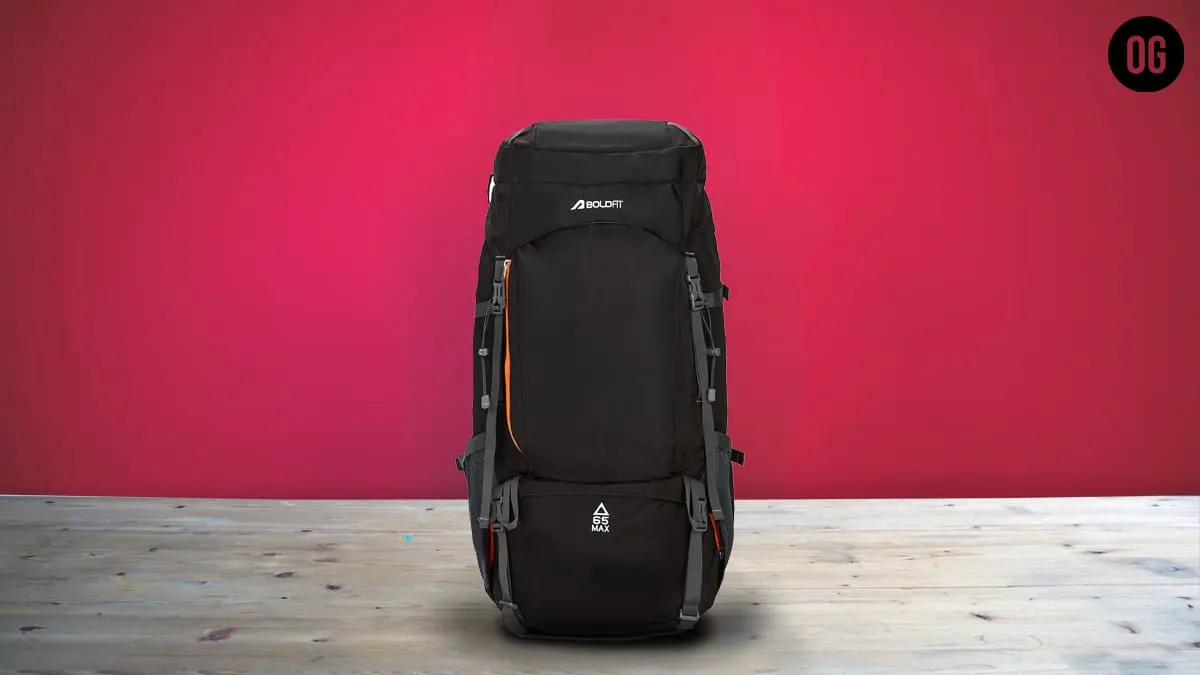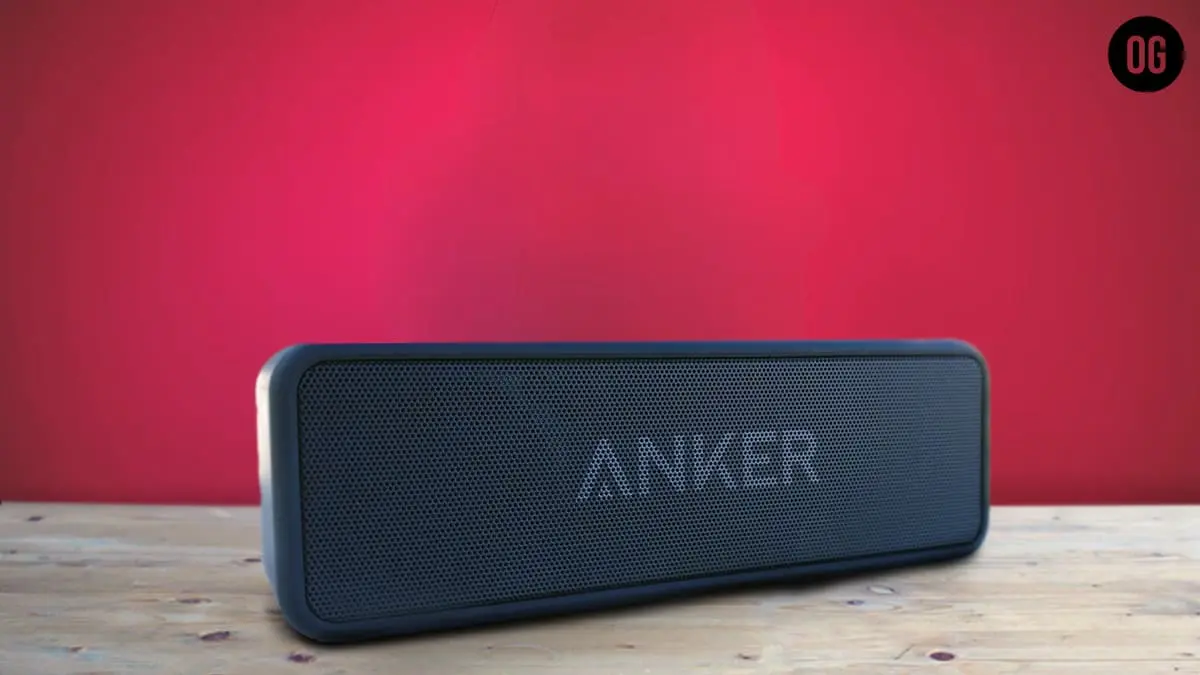Top Mistakes Travelers Make When Buying Luggage (and How to Avoid Them)
Choosing the right luggage may seem simple, but it’s one of the most underestimated travel decisions. A suitcase that’s too heavy, too large, or poorly built can turn a smooth trip into a frustrating experience — from broken wheels to excess baggage fees.
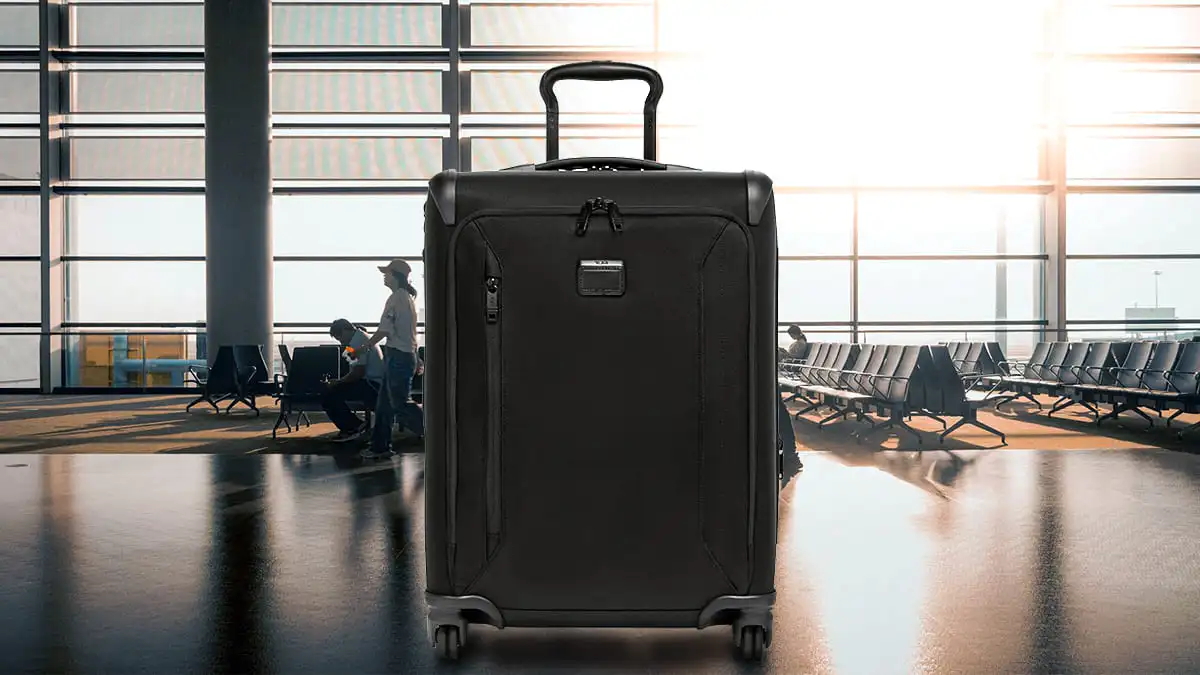
In this guide, we’ll explore the most common mistakes travelers make when buying luggage and provide expert insights on how to avoid them. Whether you’re a frequent flyer in the United States or a holiday traveler in India, these tips will help you choose a travel bag that lasts.
1. Ignoring Airline Size and Weight Restrictions
One of the biggest mistakes travelers make is not checking airline baggage rules before purchasing luggage.
Each airline — especially when comparing U.S. and Indian carriers — has different requirements for cabin and checked baggage.
For instance:
- U.S. airlines like Delta or American Airlines typically allow carry-ons up to 22 × 14 × 9 inches (56 × 36 × 23 cm).
- Indian airlines such as IndiGo or Air India often have a 7 kg carry-on weight limit, even if the dimensions fit.
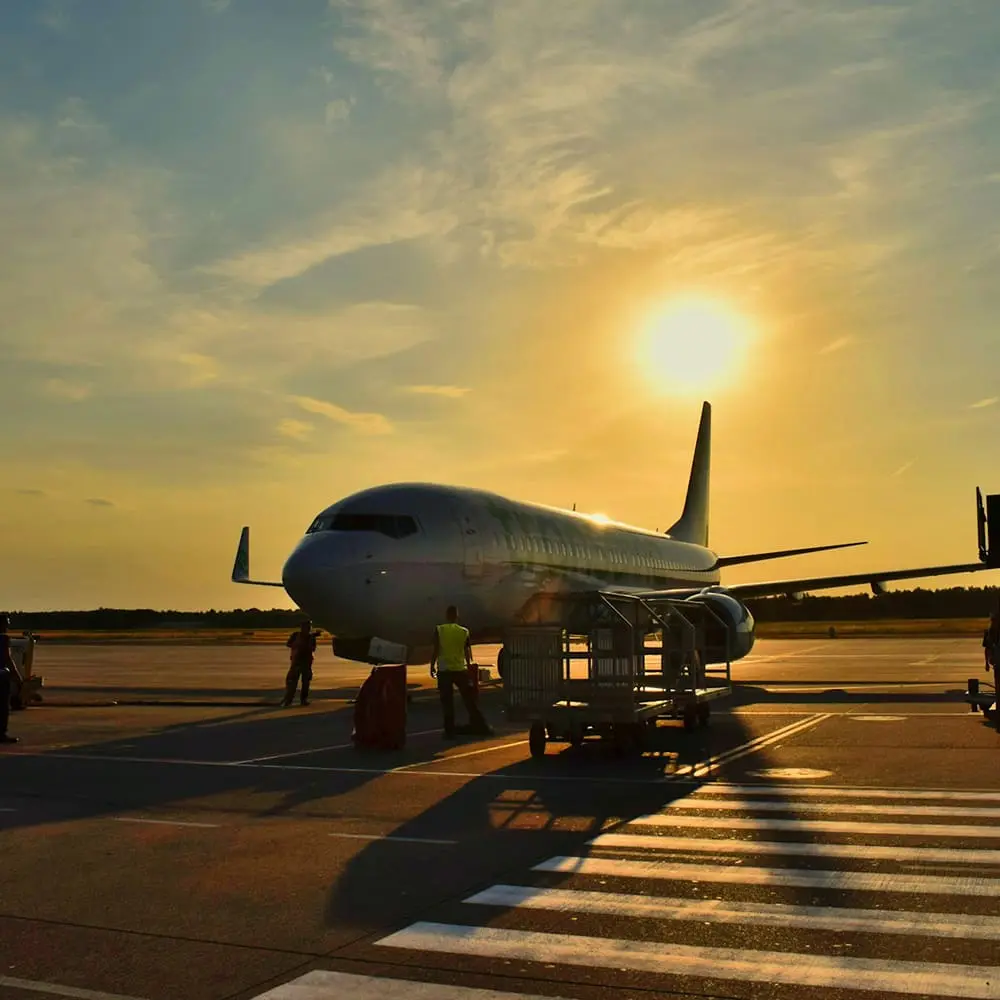
A suitcase that’s just an inch or two too large can be rejected at the gate or force you to check it in, adding unexpected fees.
How to avoid it:
✔️ Check your most frequently used airline’s luggage policy before buying.
✔️ Choose models that clearly list their internal and external dimensions.
✔️ Look for expandable designs that stay within airline limits when zipped.
✈️ Airline Size & Weight Restrictions (India vs U.S.)
⚖️ No limit
⚖️ No limit
⚖️ 7 kg
⚖️ 8 kg
🔹 Bar height represents approximate carry-on size | Weight limits shown in kg or “no limit” policies
Pro Tip: Frequent international travelers can benefit from globally compliant carry-ons like the Away Bigger Carry-On or Samsonite Freeform, both designed to meet most airline cabin requirements.
2. Choosing Style Over Durability
A glossy suitcase looks great in the showroom but may not survive long-haul flights or rough handling at Indian railway stations.
Many travelers prioritize color and design over build quality, leading to cracks, broken zippers, or dented shells within months.
The main materials to consider are:
- ABS plastic – lightweight but less durable.
- Polycarbonate – tougher, impact-resistant, and ideal for frequent travelers.
- Aluminum or hybrid shells – premium look and maximum protection.
How to avoid it:
✔️ Always check the material listed by the manufacturer.
✔️ Avoid ultra-cheap ABS bags that crack under pressure.
✔️ Choose brands known for long-lasting builds like Samsonite, Delsey, Safari, or VIP Aristocrat.
Expert Note: Polycarbonate luggage strikes the best balance between toughness and weight, making it ideal for both Indian road trips and U.S. air travel.
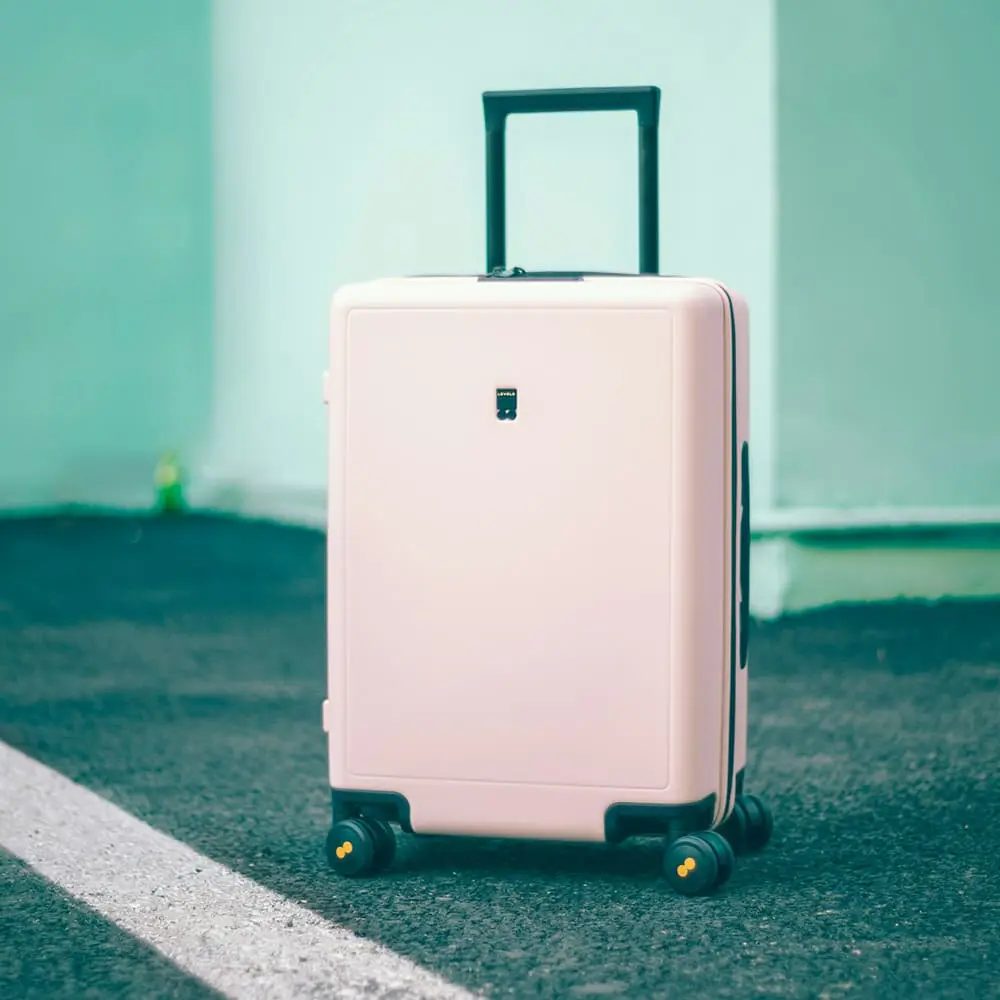
3. Overlooking Wheel and Handle Quality
Many buyers assume all wheels and handles are equal — they’re not.
Your luggage’s maneuverability depends heavily on these two components.
Common mistakes:
- Buying 2-wheel suitcases that topple easily.
- Handles that jam or wobble under pressure.
- Low-quality plastic wheels that wear out quickly on uneven surfaces.
🔘 Wheel & Handle Quality Impact
🔹 Bar height represents the contribution of each feature to overall travel comfort.
How to avoid it:
✔️ Opt for 4-wheel spinner designs for smooth airport mobility.
✔️ If you often travel by train or on rough roads in India, choose larger inline wheels that handle bumps better.
✔️ Test the telescopic handle’s sturdiness — metal double-bar handles last longer than plastic ones.
Recommended Models:
- Aristocrat Commander – affordable and smooth-rolling.
- Skybags Float Max – durable spinner with reinforced handles.
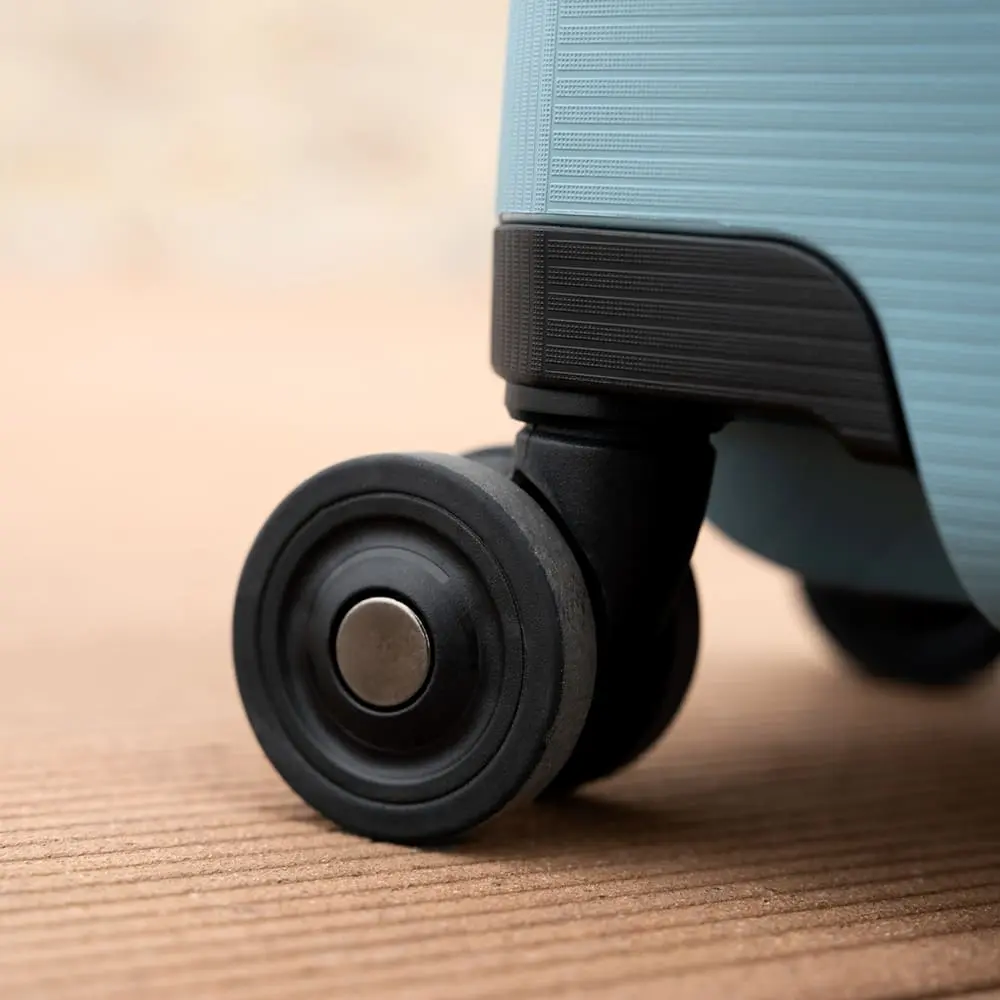
4. Forgetting About the Bag’s Own Weight
Your suitcase’s weight counts toward your airline baggage limit.
Buying a heavy bag means less room for your belongings and a higher chance of exceeding limits — a common issue with travelers in India, where many airlines restrict total weight.
Example:
If your suitcase weighs 5 kg, and the airline allows 15 kg checked baggage, you can only pack 10 kg of items.
How to avoid it:
✔️ Look for lightweight luggage under 3 kg (for carry-ons) or under 4.5 kg (for check-ins).
✔️ Materials like polycarbonate and ballistic nylon offer high strength at low weight.
✔️ Avoid bulky aluminum bags unless you truly need maximum protection.
Top Picks:
- Skybags Trooper 55 (2.3 kg carry-on) – ultralight yet tough.
- Safari Ray 55 cm Spinner – value option for Indian travelers under ₹7,000.
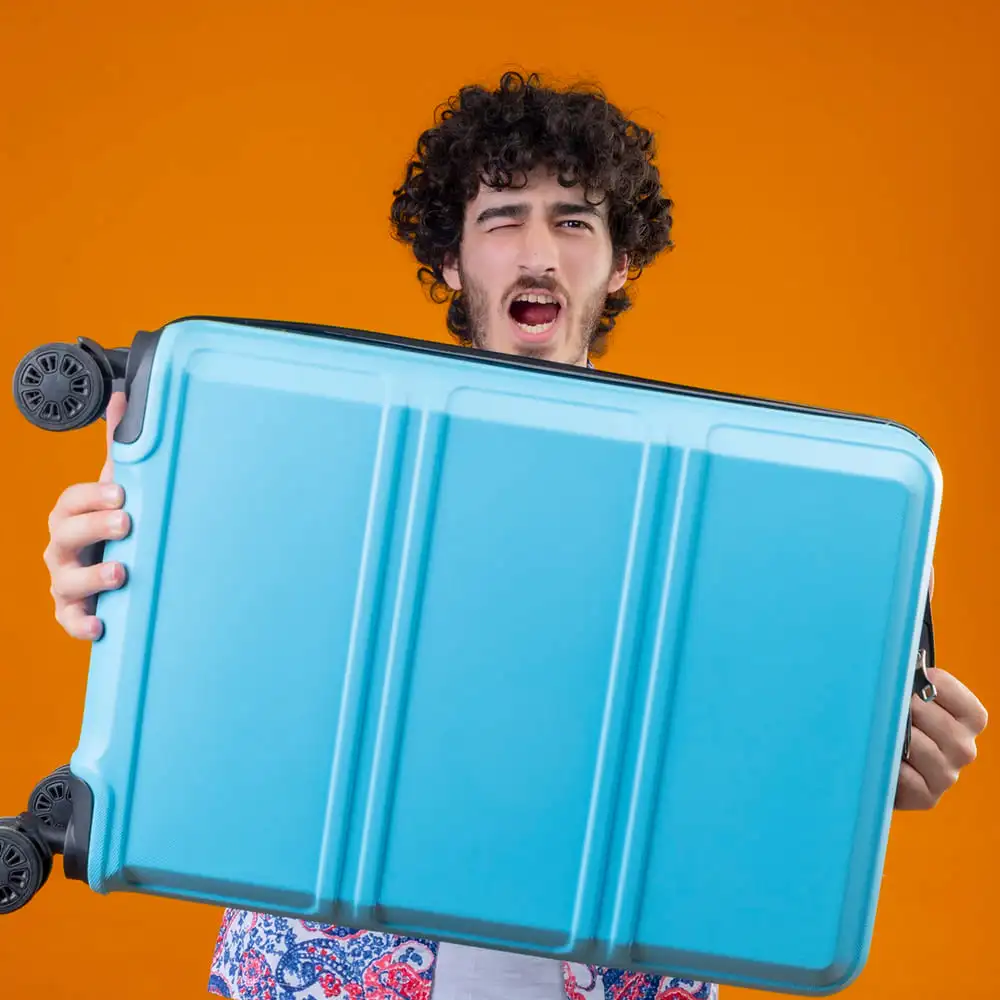
5. Skipping Security Features
A major buying mistake is ignoring built-in locks and zippers. Theft, tampering, and damage during transit are real risks — particularly on long international or domestic trips.
🔐 Security Features Adoption
🔹 Bar height represents the percentage of travelers using or preferring each security feature.
Common issues:
- Bags without TSA locks can be forced open during U.S. customs checks.
- Simple zipper locks can be punctured with a pen.
How to avoid it:
✔️ Always choose TSA-approved combination locks — they’re mandatory for travel to and from the U.S.
✔️ Prefer double-coil zippers that resist forced entry.
✔️ For extra peace of mind, go for anti-theft designs such as LEVEL8 Voyageur or Carlton Shadow.
Pro Tip: Avoid using external padlocks; integrated locks are both safer and cleaner-looking.

6. Ignoring Interior Organization and Compartments
An often-overlooked aspect is internal layout.
Many travelers regret buying luggage that looks good externally but lacks efficient internal design.
Mistake:
Having to unpack everything to find a single item or your laptop.
📦 Interior Organization Importance
🔹 Bar height represents the importance of each packing feature according to travelers’ survey insights.
How to avoid it:
✔️ Look for cross straps, mesh dividers, and compression panels.
✔️ Business travelers should opt for carry-ons with padded laptop compartments (e.g., Away Carry-On Flex).
✔️ Choose expandable compartments for flexibility on return trips.
Expert Insight: Travelers who pack neatly save up to 20% more space when using luggage with structured interiors.
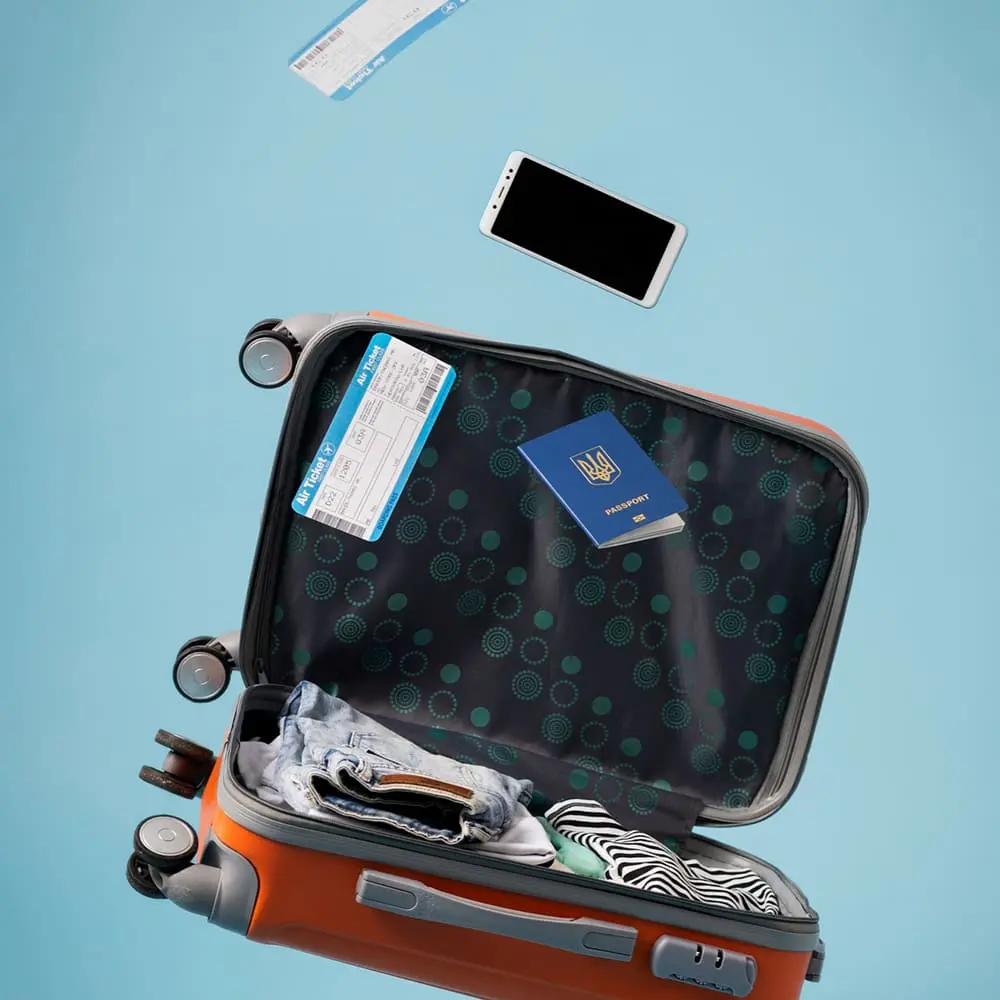
7. Ignoring Warranty and After-Sales Service
A suitcase is a long-term investment — yet many buyers skip reading the warranty details.
This becomes a problem when wheels break, zippers fail, or handles get damaged mid-trip.
How to avoid it:
✔️ Prefer brands with at least 3–10 years of warranty and authorized repair centers.
✔️ Samsonite offers global warranty support, while VIP Industries and Safari have wide coverage across India.
✔️ Register your product online to access replacement parts easily.
Pro Tip: Avoid local, unbranded suitcases that may look strong but offer no after-sales support.
8. Failing to Match Luggage to Travel Style
Different travel habits demand different luggage types.
A digital nomad flying weekly needs a completely different bag than a family taking one annual vacation.
Common mismatch examples:
- Business travelers are using bulky check-ins instead of compact carry-ons.
- Family vacationers are managing multiple small bags instead of a single expandable set.
How to avoid it:
✔️ Frequent Flyers: Hard-shell spinners with TSA locks and polycarbonate build.
✔️ Family Travelers: Nested luggage sets from American Tourister or VIP.
✔️ Adventure Travelers: Soft-shell duffels or hybrid bags with extra pockets.
✔️ Business Professionals: Smart carry-ons like LEVEL8 Textured Carry-On with laptop sleeves.
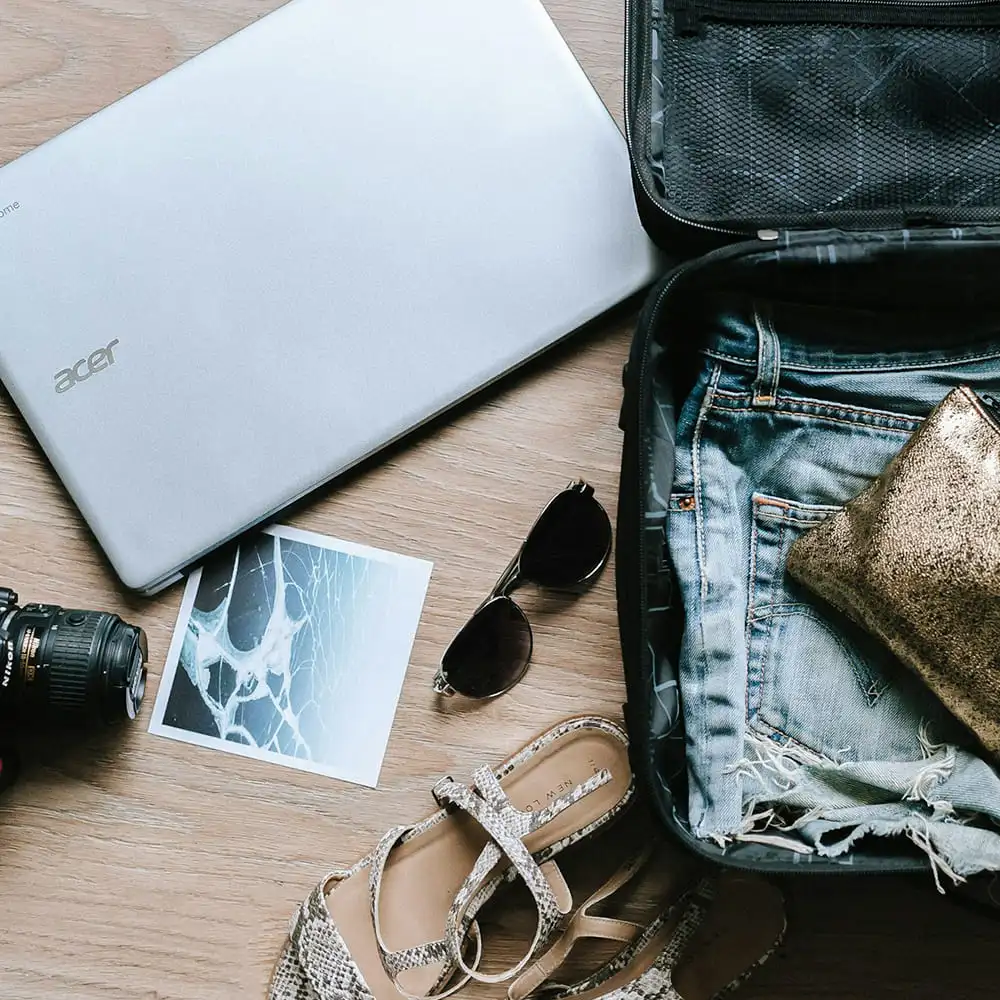
Quick Comparison Table
| Traveler Type | Ideal Luggage Type | Recommended Brands |
| Frequent Flyers | Hard-shell, lightweight spinner | Samsonite, Away |
| Family Vacationers | Expandable luggage sets | VIP, American Tourister |
| Business Travelers | Laptop-friendly carry-ons | LEVEL8, Delsey |
| Adventure/Outdoor | Soft-shell or hybrid duffel | Safari, Wildcraft |
9. Not Considering Local Travel Conditions
Travel conditions vary drastically between regions.
A suitcase that rolls perfectly in U.S. airports might struggle on uneven Indian roads or station platforms.
🌍 Local Travel Conditions (India vs. U.S.)
🔹 Comparison of luggage requirements for local travel in India vs. U.S.
How to avoid it:
✔️ If you travel mostly within India, choose thicker wheels and reinforced corners.
✔️ For air travel in the U.S., prioritize lightweight spinner wheels.
✔️ Bags with replaceable wheel systems (like some Samsonite models) offer extra lifespan.
Pro Tip: Check user reviews from your region — they often reveal real-world performance in similar conditions.
10. Buying Without Reading Reviews or Testing
Impulse buying is another common pitfall.
Photos and ads can be misleading; only real-world reviews tell the truth.
How to avoid it:
✔️ Read verified buyer reviews that discuss durability, zippers, and wheels.
✔️ If buying offline, roll the suitcase and extend the handle — it should feel balanced.
✔️ Avoid fake ratings by checking purchase-verified badges on Amazon or official brand websites.
Bonus: Look for travel forums or YouTube reviews comparing top brands in your region.
Bonus: Smart Luggage Features That Are Worth Paying For
Technology has reshaped modern luggage, but not all “smart” features are practical.
Here are the ones that genuinely make travel easier:
- USB charging port / Power bank pocket – great for business travelers.
- Integrated digital scale – helps avoid overweight baggage fees.
- GPS tracking – useful for frequent international flyers.
- App-connected locks – ensure remote security monitoring.
Caution: Some U.S. airlines require removable batteries for smart luggage, so check before flying.
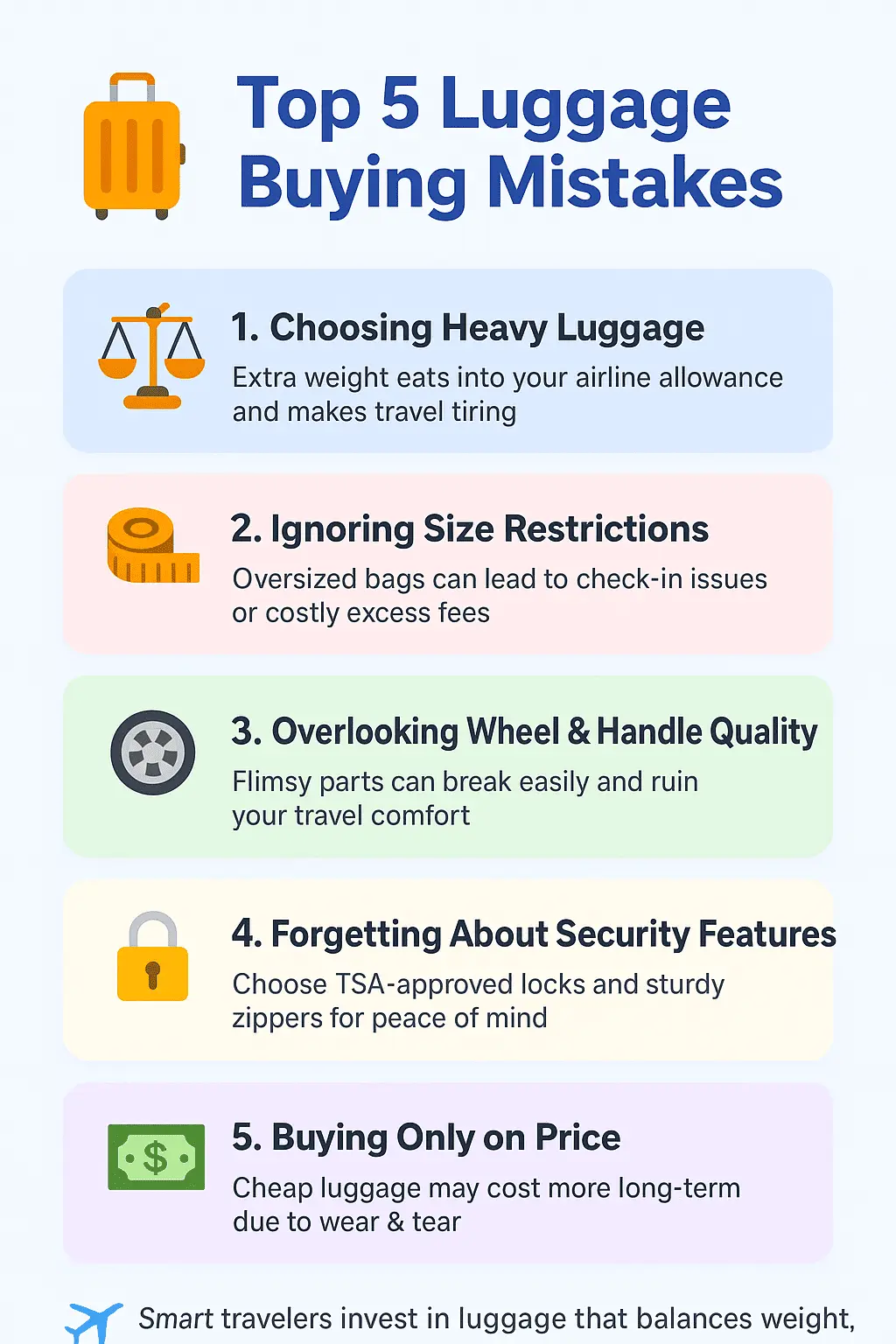
Quick Checklist: Before You Buy Your Next Luggage
✅ Airline-approved size and weight
✅ Lightweight yet durable material
✅ TSA-approved lock and secure zippers
✅ Smooth 4-wheel spinner system
✅ Functional interior compartments
✅ Sufficient warranty coverage
✅ Brand with after-sales service
Conclusion
Buying luggage isn’t just about price or looks — it’s about long-term reliability, comfort, and travel compatibility.
A well-chosen suitcase should glide smoothly through airports, survive rough roads, and keep your belongings protected across continents.
By avoiding these common mistakes and investing in trusted brands like Samsonite, American Tourister, Safari, Away, or Delsey, you’ll travel smarter, lighter, and stress-free.
So next time you’re shopping for a suitcase, think beyond color and cost — choose one that’s truly built for your journey.

